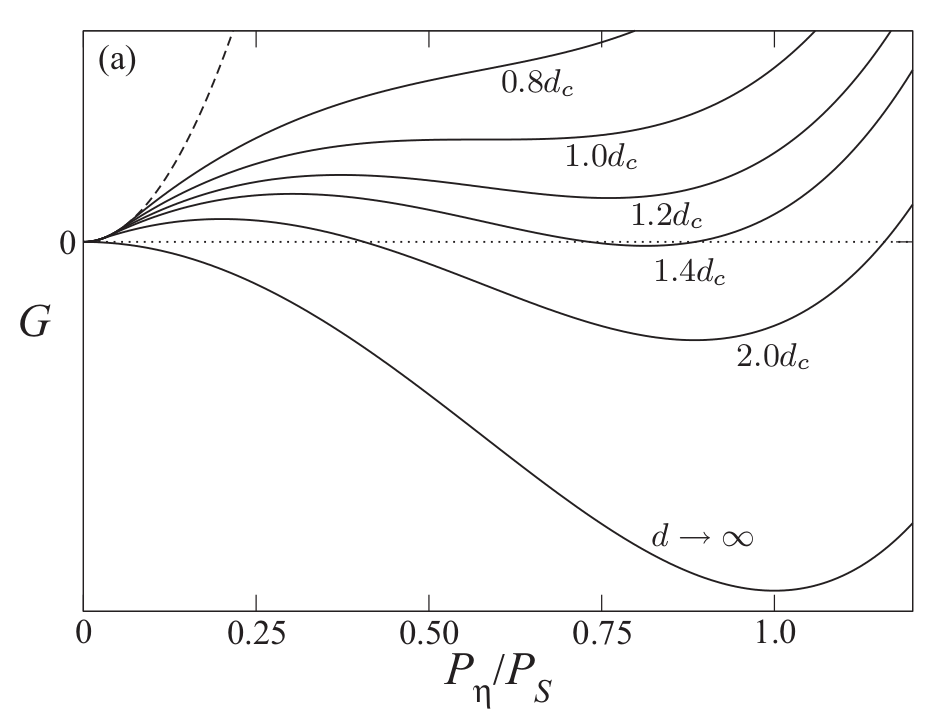Figure: Energy per unit volume as a function of polarization for various thicknesses. The numbers next to the curves indicate the values of the thickness in each case. Figure taken from P. Aguado-Puente, N. C. Bristowe, B. Yin, R. Shirasawa, P. Ghosez, P. B. Littlewood, and E. Artacho, Phys. Rev. B 92, 035438 (2015).
FERROELECTRICS PbTiO3/SrTiO3
Motivation of the modeling:
The formation of a two-dimensional electron gas (2DEG) at oxide interfaces as a consequence of polar discontinuities has generated an enormous amount of activity due to the variety of interesting effects it gives rise to. In this study is analyzed under what circumstances similar processes can also take place underneath ferroelectric thin films.
Achievements of the model:
Results obtained from first-principles simulations of ferroelectric thin films are used to test the validity of a simple Landau model developed to predict the range of stability of a 2DEG in a prototypical system.
Model system/Software:
SIESTA simulations of a slab of PbTiO3 in vacuum. A suitable in-plane lattice constant was chosen to mimic the strain of a SrTiO3 substrate.
The SIESTA simulations provided the following main information:
- Equilibrium polarization and energies of the resulting structures as a function of the thickness
- Critical thickness
- Information of the geometrical neck cross-section of the system configurations
- Atomic forces on the lateral nanocluster surfaces
Emilio Artacho, part of the SIMUNE´s board of experts and member of the core development team of the SIESTA code, is one of the authors of this work.



